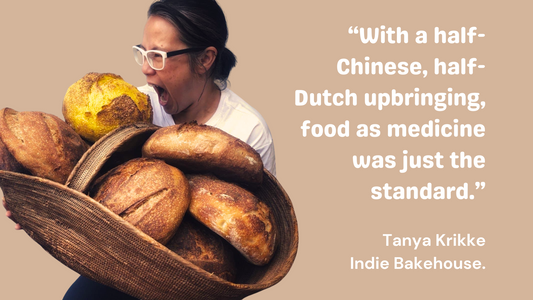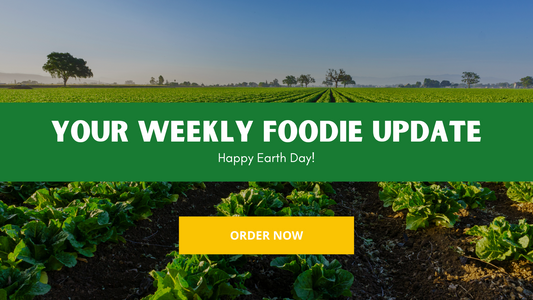Though she did not set out to do so, Rachel Carson, a biologist from Maryland USA, altered the course of history.
It was her monumental book Silent Spring, or what she referred to as "The poison book", written in 1962, which took on some of the largest and most powerful industrial forces in the world. It’s a searing indictment of our rampant misuse of ‘biocides’ (a term that Carson prefers to ‘pesticides’ because it more honestly points to the indiscriminate death-dealing nature of these poisons). Carson’s research made a simple but bold case: if humankind poisoned nature, nature would in turn poison humankind. As we now know, that is certainly the case.
Carson’s research made a simple but bold case: if humankind poisoned nature, nature would in turn poison humankind.
Once these icide chemicals enter the biosphere, they don’t only kill the intended bugs but also make their way up the food chain – threatening bird species, fish populations and eventually human health.
She writes in Silent Spring: "For the first time in the history of the world, every human being is now subjected to contact with dangerous chemicals, from the moment of conception until death. In less than two decades of their use, the synthetic pesticides have been so thoroughly distributed throughout the animate and inanimate world that they occur virtually everywhere".
While much of the data that Carson drew at the time weren’t new by any means (the scientific community had known of these findings for some time), Carson was the first to draw them together for public scrutiny. In doing so, Carson popularised modern ecology.
Silent Spring begins with a myth, "A Fable for Tomorrow" in which she describes a town in the heart of America where all life seemed to live in harmony with its surroundings. Cognisant of connecting her ideal world to one that readers knew, Carson presents not a pristine wilderness but a town where people, roads and gutters coexist with nature - until a mysterious blight befalls this perfect place. ‘"No witchcraft," Carson writes, "no enemy action had silenced the rebirth of new life in this stricken world. The people had done it themselves."
Carson’s target audience at that time included ‘housewives’. She relied upon this ready-made army both as sources who discovered robins and squirrels poisoned by pesticides outside their back doors and as readers to whom she had to appeal – since they had children. Carson asks her readers:
"By acquiescing in an act that causes such suffering to a living creature, who among us is not diminished as a human being?"
In such a statement Carson was one of the very first people to knock some of the shine off modernity, arguing that humans should not seek to dominate nature through chemistry in the name of progress.
But Industry was not impressed, and responded with hostility and aggression. Velsicol, a manufacturer of DDT at the time, threatened to sue the publishers of Silent Spring, Houghton Mifflin and The New Yorker, and tried to stop the environmental publication, Audubon, from excerpting the book in its magazine. In a bold move, Audubon went ahead anyway and took it one step further including an editorial about the chemical industry’s reaction to the book.
The personal attacks continued though, and were immense. Carson was accused of being a "communist sympathiser" and dismissed as a "spinster who had an affinity for cats". Yep, those were the times. In one threatening letter to Houghton Mifflin, Velsicol’s general counsel insinuated that there were "sinister influences" in Carson’s work: she was some kind of agricultural propagandist in the employ of the Soviet Union and her intention was to reduce Western countries’ ability to produce food, to achieve ‘east-curtain parity’.
But Carson also had powerful advocates. Among them was President John F. Kennedy, who established a presidential committee to investigate pesticides. In June 1963, Carson made her appearance before the Senate subcommittee. In her testimony, Carson didn’t just highlight the problems she identified in Silent Spring but presented the policy recommendations she’d been working on for five years.
With all that said and done, Carson’s work certainly stands out as a hugely difficult thing that one woman did to save the Earth. She made her intention to halt humanity’s war on the biosphere explicit, and yet, if anything, environmental issues have grown larger – and more urgent – since Carson’s day. We have not taken heed of her warnings or recommendations.
So if you haven’t read Silent Spring, published over 50 years ago now, you need to. It’s a book of unique and timeless impact, and is as relevant and scientifically sound today as the day it was published.
We certainly live in a better world because of this brave woman – there is no argument about that.
Silent Spring is one of history’s greatest tributes to the difference that one person armed with the truth and a love of life can make to the future of the world.
Such distinctive humanity deserves our keenest attention and our utmost appreciation. In times like ours, when we desperately need environmental heroes as models after which to pattern our own commitment to celebrating and defending our home planet, we need look no further than this woman, our bold foremother, to lend us the courage and example we need to carry the good work forward into the next century. Cheers to you, Rachel, we salute you!




